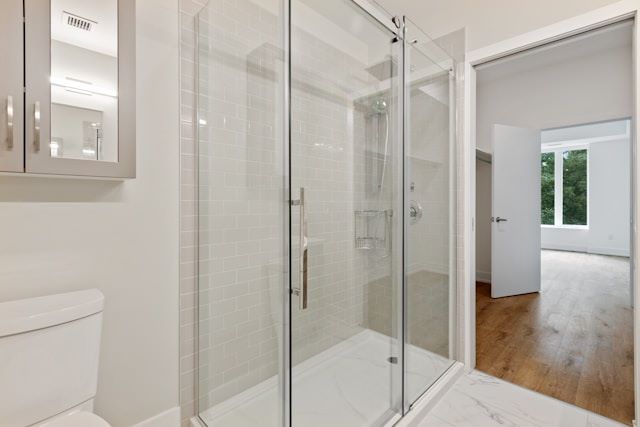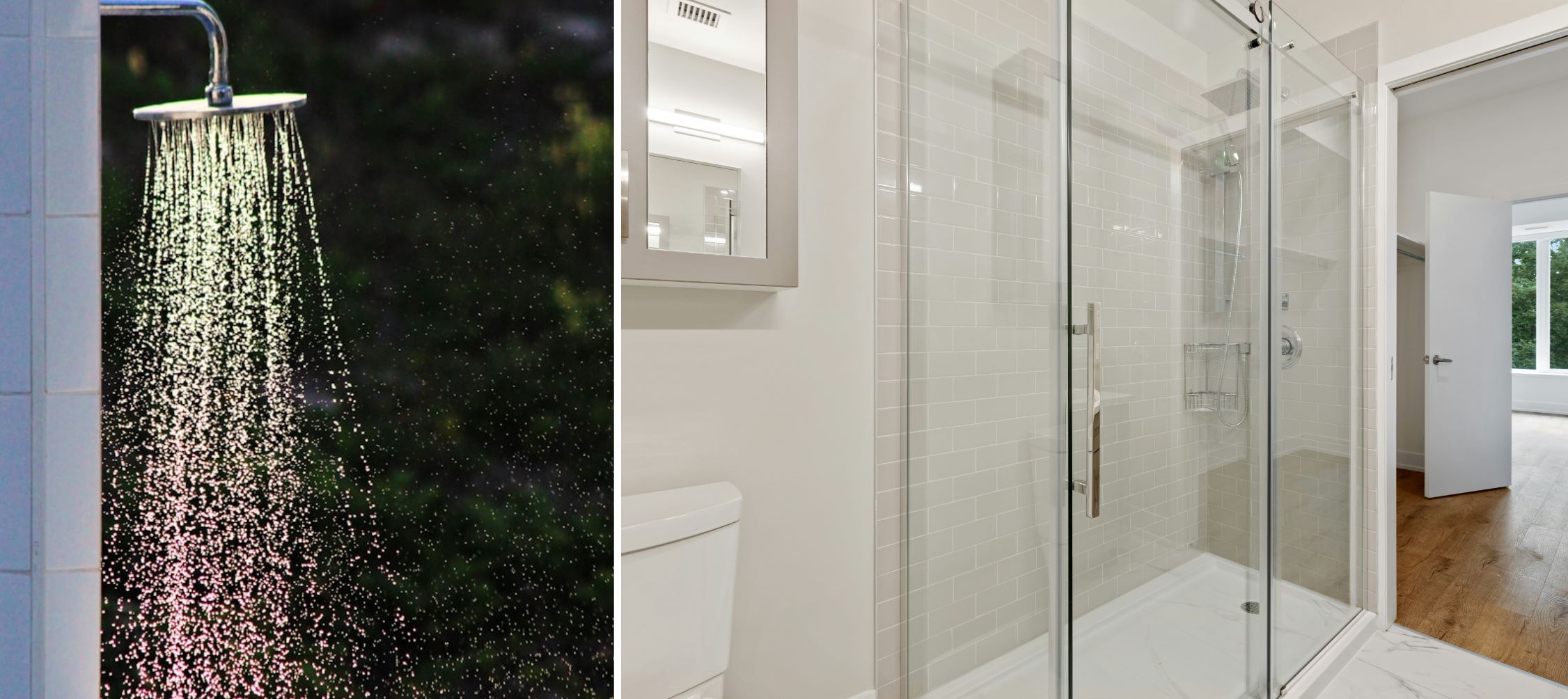Choosing the right shower door can significantly influence your bathroom’s functionality and aesthetic appeal. The decision between a swinging or sliding door, among other styles, hinges on various factors, including space availability, personal preference, and overall bathroom layout.
In this article, we’ll explore the distinct characteristics of different shower doors and their installation processes, providing the necessary insights to make an informed decision for your bathroom renovation.
Types of Shower Doors
Swinging Doors
Swinging shower doors, hinges, or pivot doors are attached to one side of the shower and open outward. They typically come in single or double-panel options, with the latter being more suitable for larger openings.
One major benefit of swinging doors is their ability to create a wider entrance space, making entering and exiting the shower easier. However, they require sufficient clearance space for the door to open without obstruction.

Sliding Doors
Sliding shower doors comprise two or more panels that slide along a track system, making them ideal for bathrooms with limited space. They are available in various configurations, including bypass doors (where one-panel slides behind the other), in-line doors (where both panels slide in the same direction), and curved doors.
Sliding doors are practical, easy to use, and require less clearance than swinging doors. However, they may not provide as wide an entrance as swinging doors do, making them less ideal for people with mobility issues or those who prefer more spacious showers.
Folding Doors
Folding shower doors are a unique combination of swinging and sliding doors. The panels fold inwards, creating an accordion-like effect that saves space while providing a wider entrance than standard sliding doors. They are suitable for bathrooms with limited space or awkward layouts where traditional swinging or sliding doors may not be feasible.
Folding doors are also popular for bathtub-shower combos, as they allow easy access to the tub. However, installation can be more complex and expensive than other shower door options.
Shower Door Installation
Before installing a new shower door, measuring your shower opening accurately is essential to ensure a perfect fit. You should also consider the type of material you want for your door, such as glass or acrylic, and the hardware finish that best compliments your bathroom design.
Shower door installation requires basic tools, including a drill, level, screwdriver, and measuring tape. It’s recommended that someone assist you during installation to ensure safety and accuracy.
Once you have all the necessary materials and tools, follow these general steps for installing a shower door:
- Begin by attaching the bottom track to the shower base, making sure it’s level and secured with screws.
- Place the side jambs on both ends of the bottom track and attach them to the wall using screws.
- Per the manufacturer’s instructions, install any additional panels or hardware, such as handles or towel bars.
- Hang the door panels onto the top track and secure them in place.
- Adjust the door panels to ensure they open and close smoothly, making any necessary adjustments to the bottom track or jambs as needed.
- Lastly, seal gaps between the shower door and walls with caulk to prevent water leakage.

Additional Factors to Consider
- Material Durability: Consider the longevity and maintenance requirements of the material used in shower doors. Glass is a popular choice for its sleek look, but acrylic doors may offer more durability and resistance to shattering.
- Style and Design: Your shower door should complement the overall theme of your bathroom. Consider whether a modern, minimalist door or a more classic, framed style suits your space better.
- Privacy Needs: For shared or family bathrooms, you might opt for frosted or patterned glass doors to enhance privacy while allowing light to pass through.
- Water Leakage Prevention: Ensure the shower door design you choose effectively prevents water from leaking onto the bathroom floor. Some door styles offer better sealing against water leakage than others.
- Budget Constraints: Shower doors vary in price depending on the material, design, and installation complexity. Set a realistic budget that accounts for both the purchase and installation costs.
- Ease of Cleaning: Look for shower doors with minimal frames and hardware to reduce the build-up of soap scum and make cleaning simpler and more efficient.
Conclusion
Choosing the right shower door is an integral part of any bathroom renovation. Whether you opt for a swinging, sliding, or folding door, it’s essential to consider factors such as space availability, material durability, and design preferences.
Proper installation is also crucial in ensuring functionality and preventing water leakage. So take your time, research, and consult a professional if needed. With the right shower door, you can transform your bathroom into a functional and stylish space that meets all your needs.









